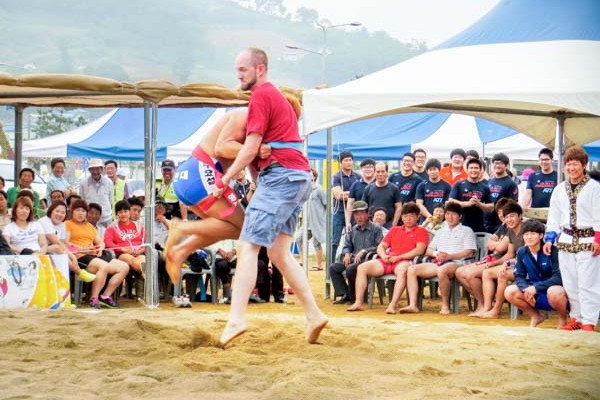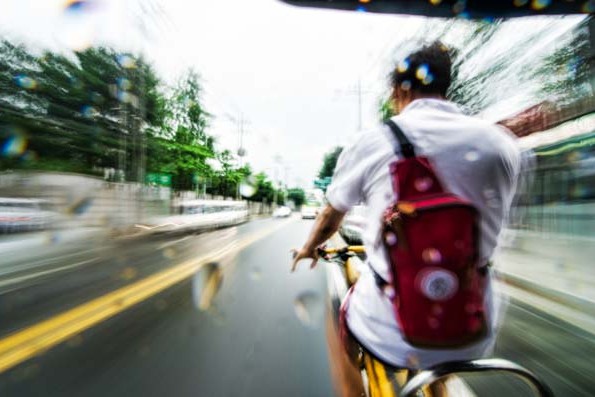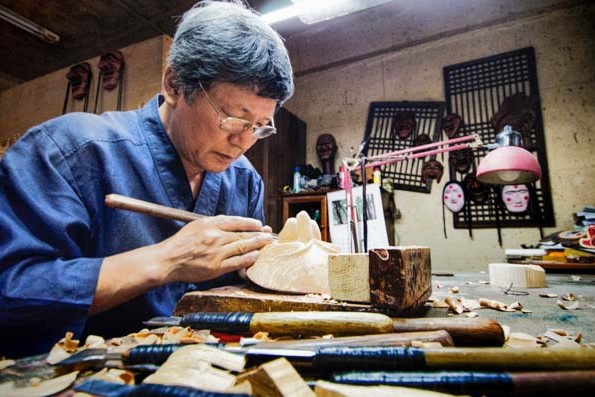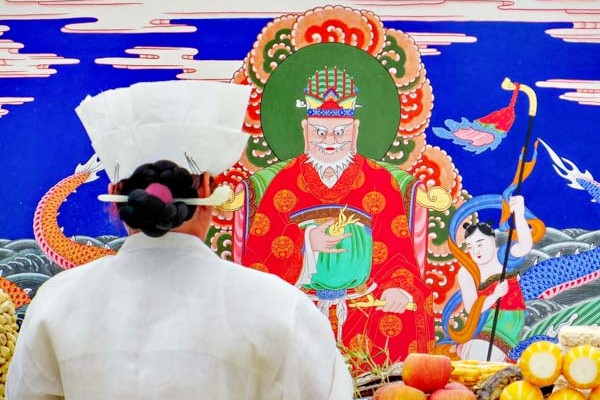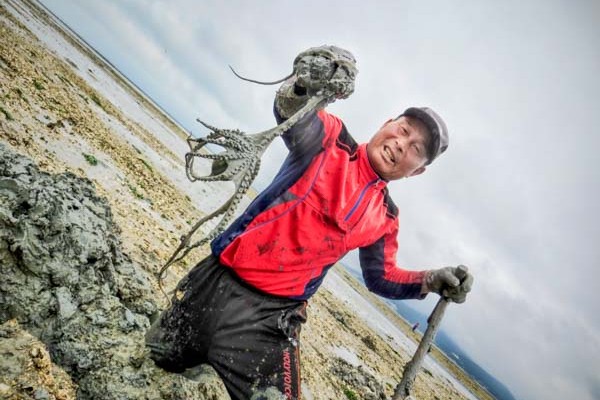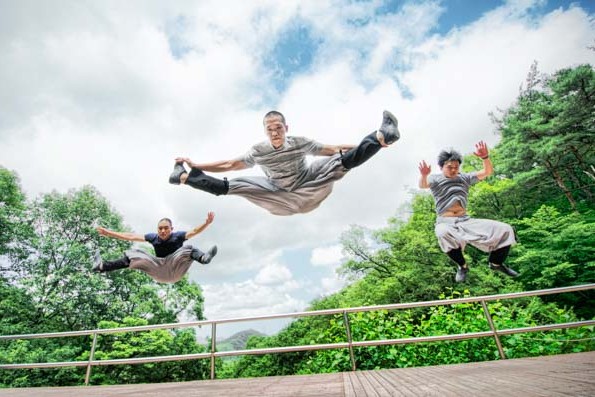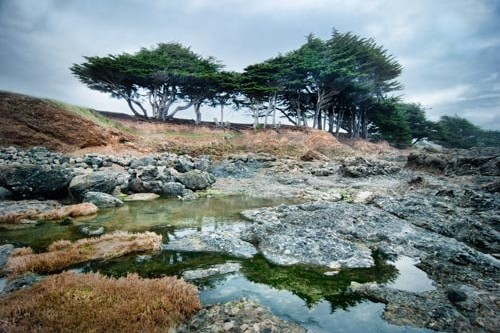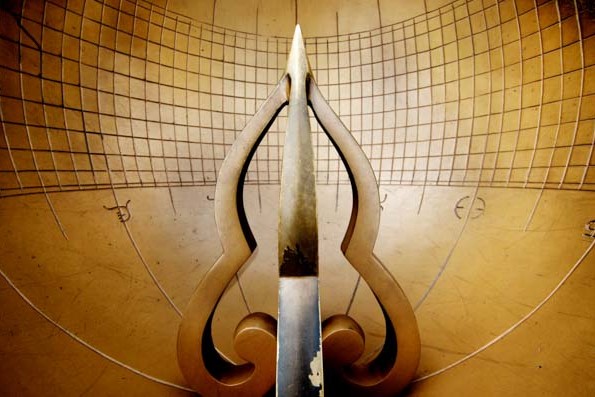When I think of an exorcism, I think of someone strapped to a bed with a priest splashing holy water on their body.
With dancing, singing, music and booze, a South Korean shamanistic exorcism is anything but.

What is Korean Shamanism?
Korean Shamanism is a fusion of numerous traditional religions that strive to resolve our earthly problems by uniting humans and spirits.
By holding a gut (religious ceremony), devotees hope to gain fortune, cure illness, change their luck or appease a local God.

A Gut for the Dragon King/Sea God
For Shamanistic fishermen in Yeonggwang-Gun, South Korea, keeping the Dragon King appeased is of utmost importance.
Sometimes called the Sea God, he demands an annual exorcism ritual known as the Seohaean Baeyeonsingut.
Through prayers, offerings, song, dance, music and booze, the town hopes to ensure a prosperous year of fishing.
The Dragon King also controls the rain; so, farmers yearning for a drought-free summer also have a vested interest in the gut.
This is where we came in.
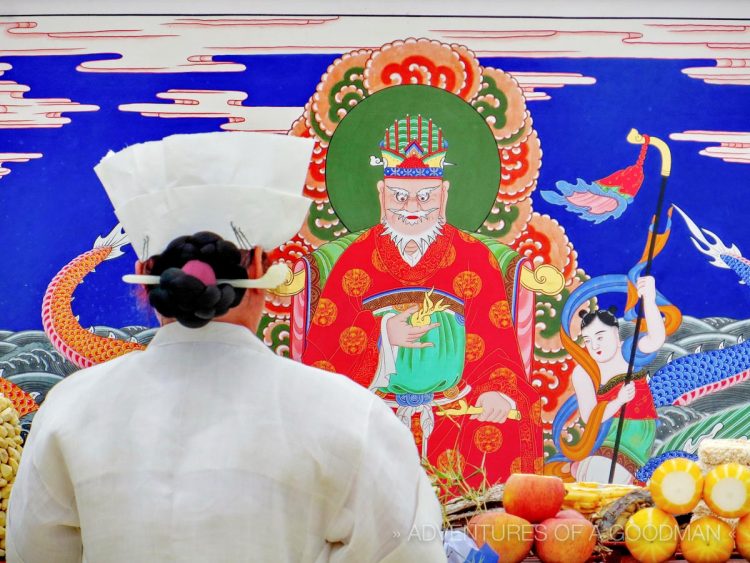
A Gut on a Boat
Courtesy of National Geographic Channel, Jesse and I found ourselves in the middle of this traditional, local and exclusive gut.
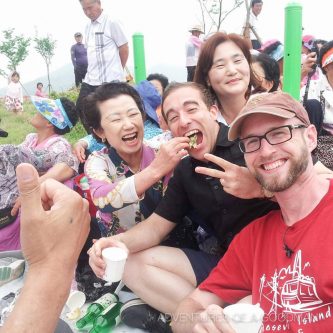
While waiting to board, we joined a densely-packed line of locals and were immediately welcomed into a picnic.
Before we could sit, our new friends were chopstick-feeding us traditional Korean seafood pancakes while pouring soju shots for all.
Saying no was not an option; even if there was a long day of filming ahead.
. . .
After saying goodbye, I realized just how lucky Jesse and I were. While they would watch the gut from a neighboring boat, we were on our way to the main vessel alongside the mayor.
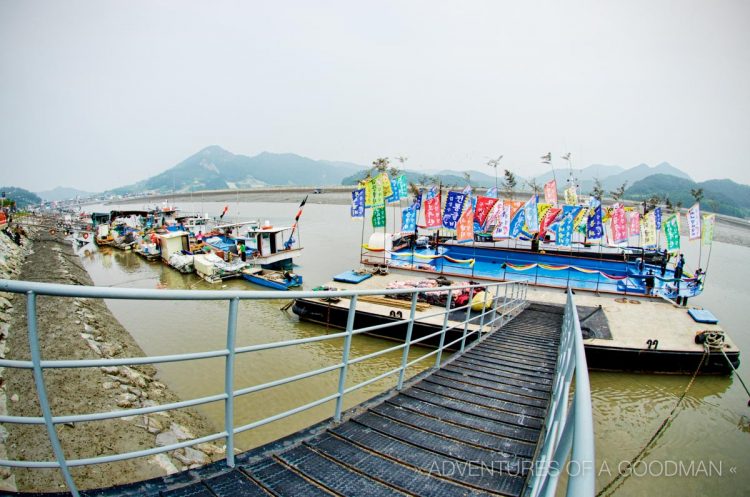
Traditional Korean Farmer’s Music
As Jesse and I boarded, we were greeted by a group of costumed dancers and musicians performing pungmul: a Korean folk tradition often known as “farmer’s music.”
Also called pyeongtaek nongak, this non-religious custom is meant to lift everyone’s spirits before the serious ceremony begins.
I’ll be honest; at first I thought they were the main event and that a gut was going to be the best religious event ever! In the end, I wasn’t far off.
. . .
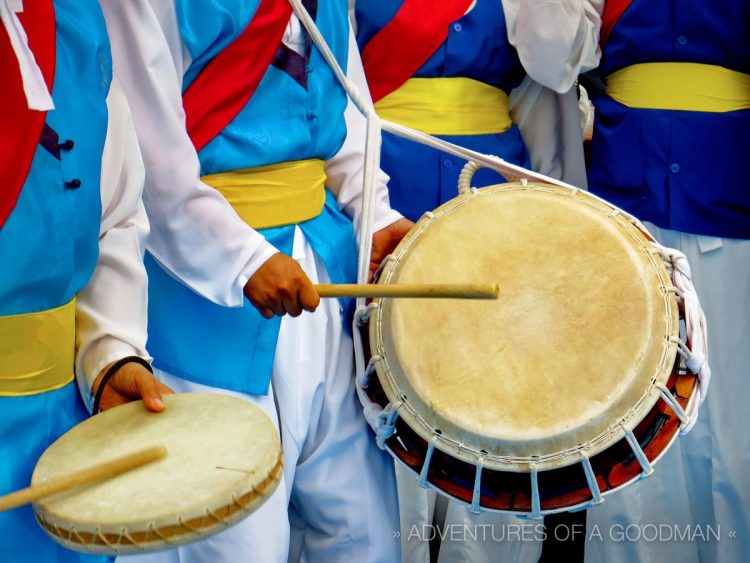
The Jae Sa Ceremony
Before the gut, robed Shaman holy men took turns making offerings to the Dragon King as part of the Jae Sa Ceremony.
One-by-one, they went up to the alter, knelt, said a prayer, took a shot of booze, stood up, bowed, knelt again, said another prayer and got back in line.
Once the holy men were finished, they invited local dignitaries to make their own offering to the Sea God.
This often involved depositing an envelope of money into a severed pig’s head.
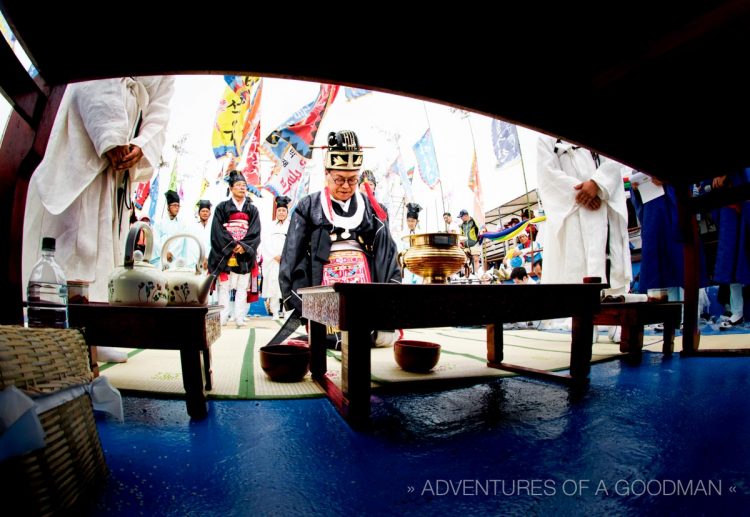
Now It’s Our Turn
I was in my own world during the Jae Sa ceremony; snapping a million photos and trying to take it all in.
Then, as the ceremony began to wind down, I looked over and saw Hyejung, our director, waving at me.
Jesse and I had been invited to take part in this ancient ritual.
An overwhelming feeling of honor filled my heart as we walked past the holy men and up to the alter.
With every camera now pointed at me, we performed the ceremony and were showered with smiles and praise for a “job well done.”
No one else had received a similar affirmation, which just made the moment that much more special.
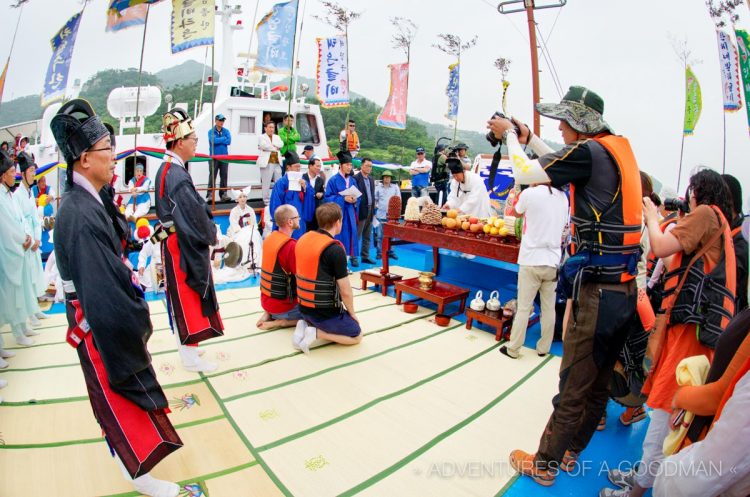

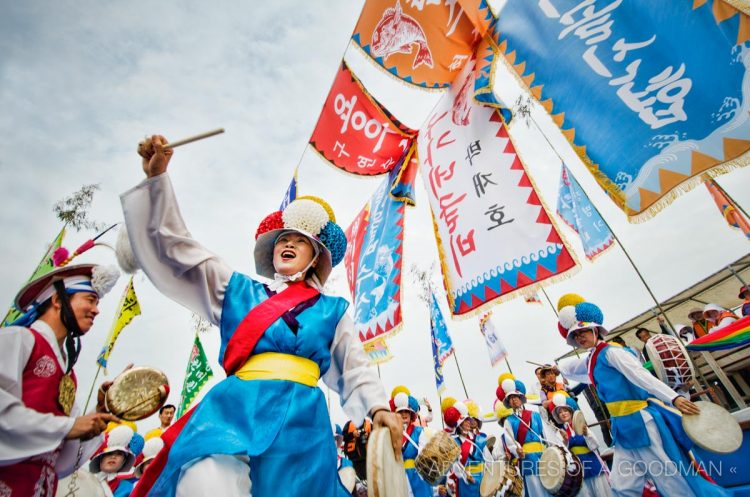
What About the Gut?
and the Cow’s Head?
and the Afterparty?
It’s all in Part II, which you can read here!
. . .
GET LOST IN KOREA
In 2013, I was hired by National Geographic to film a TV show in South Korea … following my adventures as a travel blogger and photographic storyteller.
The single-episode show offered a mix of humor, tradition, adventure and stunning imagery; as I teamed up with Jesse Day: a Canadian entertainer who lives in Seoul and raps in Korean.
Here are the highlights from filming Get Lost in Korea …
EXPLORE SOMEWHERE NEW
BUY A PRINT
All photos on this site are available as limited edition fine art photographic prints. Please get in touch for sizes and rates.



